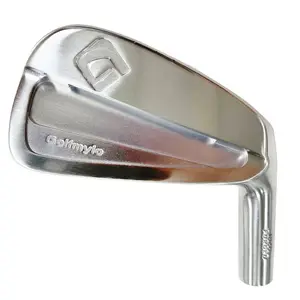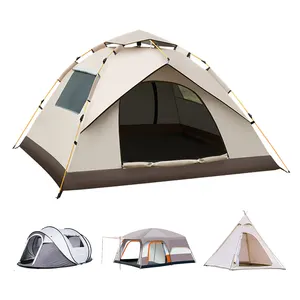





Akku-Elektro werkzeuge Hand bohrmaschinen Kombi bohrer Schnell wechsel bohrer 18V / 20V Lithium-Ionen-Batterie Bürstenloser Motor
37,09 € - 38,95 €
Mindestbestellmenge: 500 Sätze
Versand pro Stück: 37,16 €






MPT 21V Akku-Schlags ch rauber Hochwertiger tragbarer Mini-Drehmoment-Elektro schrauber 230N.m
59,34 € - 69,54 €
Mindestbestellmenge: 2 Stück







JSPERFECT profession eller wiederauf ladbarer 18-V-Akku-Bohrhammer mit Lithium batterie
29,67 € - 32,46 €
Mindestbestellmenge: 2 Stück
Versand pro Stück: 109,26 €







POWER TEC 20V Akku-Bürstenloser Schrauben dreher Elektro werkzeuge 20V Wiederauf ladbarer Bohrer Bürstenloser Schrauben dreher 300N.m
26,89 € - 29,21 €
Mindestbestellmenge: 500 Stück







Lithium-multifunktionales mehrzweck-wiederaufladbares universelles lithium-elektrowerkzeug-set bürstenloser elektrobohrer
24,19 €
Mindestbestellmenge: 100 Stück
Versand pro Stück: 70,09 €







Fabrik großhandel lithium-akkubohrer elektrische tragbare werkzeuge tragbare Bohrer
15,77 € - 16,00 €
Mindestbestellmenge: 2 Einheiten
Versand pro Stück: 204,79 €

- 50%


GRAND FAR 400w elektrische Bohrmaschine industrielle Mini-Bohrer Multifunktions billige Bohrmaschinen elektrische Handwerkzeuge
Sofort lieferbar
5,66 €
Mindestbestellmenge: 2 Stück
Versand pro Stück: 22,61 €

TOLSEN 79500 230V 50Hz 3800 U/min Mini tragbare Hand maschine Elektro bohrmaschine
Sofort lieferbar
14,01 € - 15,48 €
Mindestbestellmenge: 6 Stück
Versand pro Stück: 7,34 €






400W Mini Elektro bohrmaschine Handwerkzeug satz 220V Für Stahl Holz 10Mm Elektro bohrmaschine Für Nägel
7,33 € - 7,52 €
Mindestbestellmenge: 500 Stück

Elektrische Hand bohrer 400W 10mm tragbare Hand bohrmaschine Preis, profession elle Elektro werkzeuge
10,20 € - 12,06 €
Mindestbestellmenge: 500 Sätze






iPOPULUS 400 W Schraubenzieher Bohren 10 mm hochwertiger leistungsstarker Handbohrer elektrischer Schlagbohrer
5,56 € - 6,49 €
Mindestbestellmenge: 500 Stück

Vollplus VPHD1020 400W 10mm Hochwertige Werkzeuge tragbare elektrische Mini-Hand bohrmaschine
6,50 € - 11,13 €
Mindestbestellmenge: 500 Stück
Top-Kategorien
Über 400w elektrische hand bohrer
Finde echtes 400w elektrische hand bohrer. auf Alibaba.com, um eine schnellere und effizientere Bewegung von Ort zu Ort zu ermöglichen. Diese hochwertigen Geräte sorgen für Sicherheit und Leistung des Benutzers, um die Fahrt angenehm und sicher zu gestalten. Diese stabilen 400w elektrische hand bohrer. sind vielseitig einsetzbar mit verstellbaren Griffen für alle Altersgruppen, da sie für alle Höhen anpassbar sind. Der speziell entwickelte Kunststoff- und Gummigriff ist entscheidend für einen besseren Halt beim Fahren mit höherer Geschwindigkeit.
Diese modischen und stilvollen 400w elektrische hand bohrer. sind mit der neuesten Innovation und Design für eine mühelose Fahrt gemacht. Die langlebigen Räder sind aus verschleißfesten Materialien gefertigt, um den alltäglichen Herausforderungen beim Fahren standzuhalten. Die Räder sind auf unebenen Straßen zuverlässig, da sie über eine stoßdämpfende Technologie verfügen, die den Benutzer vor dem wackeligen Aufprall schützt. Die rutschfesten Räder erhöhen auch die Sicherheit, da ihr Grip auf der Straße und auf Gehwegen Unfälle begrenzt.
Diese eleganten 400w elektrische hand bohrer. bei Alibaba.com sind auch aufgrund ihrer einzigartig gestalteten Decks stabil. Diese geräumigen Decks bieten genügend Platz, um den Benutzern beim Fahren ein hohes Gleichgewicht zu bieten und ihre Sicherheit weiter zu verbessern. Diese hochmodernen Ausrüstungsdecks sind außerdem so konstruiert, dass sich die Benutzer voll und ganz auf die Fahrt konzentrieren können, ohne sich Gedanken über Stürze machen zu müssen.
Erwerben Sie die verlockenden 400w elektrische hand bohrer. Diese werden auf Alibaba.com angeboten, wo die Auswahl für alle groß ist. Lieferanten wird empfohlen, diese Geräte von bester Qualität für den Wiederverkauf und auch für den persönlichen Gebrauch zu beschaffen. Die Optionen sind umwerfend mit allen Bereichen von Farben, Größen und individuellem Design, je nachdem, was man kauft.
Diese modischen und stilvollen 400w elektrische hand bohrer. sind mit der neuesten Innovation und Design für eine mühelose Fahrt gemacht. Die langlebigen Räder sind aus verschleißfesten Materialien gefertigt, um den alltäglichen Herausforderungen beim Fahren standzuhalten. Die Räder sind auf unebenen Straßen zuverlässig, da sie über eine stoßdämpfende Technologie verfügen, die den Benutzer vor dem wackeligen Aufprall schützt. Die rutschfesten Räder erhöhen auch die Sicherheit, da ihr Grip auf der Straße und auf Gehwegen Unfälle begrenzt.
Diese eleganten 400w elektrische hand bohrer. bei Alibaba.com sind auch aufgrund ihrer einzigartig gestalteten Decks stabil. Diese geräumigen Decks bieten genügend Platz, um den Benutzern beim Fahren ein hohes Gleichgewicht zu bieten und ihre Sicherheit weiter zu verbessern. Diese hochmodernen Ausrüstungsdecks sind außerdem so konstruiert, dass sich die Benutzer voll und ganz auf die Fahrt konzentrieren können, ohne sich Gedanken über Stürze machen zu müssen.
Erwerben Sie die verlockenden 400w elektrische hand bohrer. Diese werden auf Alibaba.com angeboten, wo die Auswahl für alle groß ist. Lieferanten wird empfohlen, diese Geräte von bester Qualität für den Wiederverkauf und auch für den persönlichen Gebrauch zu beschaffen. Die Optionen sind umwerfend mit allen Bereichen von Farben, Größen und individuellem Design, je nachdem, was man kauft.






















